Metabolomics of dates (Phoenix dactylifera) reveals a highly dynamic ripening process accounting for major variation in fruit composition
- PMID: 26674306
- PMCID: PMC4681049
- DOI: 10.1186/s12870-015-0672-5
Metabolomics of dates (Phoenix dactylifera) reveals a highly dynamic ripening process accounting for major variation in fruit composition
Abstract
Background: Dates are tropical fruits with appreciable nutritional value. Previous attempts at global metabolic characterization of the date metabolome were constrained by small sample size and limited geographical sampling. In this study, two independent large cohorts of mature dates exhibiting substantial diversity in origin, varieties and fruit processing conditions were measured by metabolomics techniques in order to identify major determinants of the fruit metabolome.
Results: Multivariate analysis revealed a first principal component (PC1) significantly associated with the dates' countries of production. The availability of a smaller dataset featuring immature dates from different development stages served to build a model of the ripening process in dates, which helped reveal a strong ripening signature in PC1. Analysis revealed enrichment in the dry type of dates amongst fruits with early ripening profiles at one end of PC1 as oppose to an overrepresentation of the soft type of dates with late ripening profiles at the other end of PC1. Dry dates are typical to the North African region whilst soft dates are more popular in the Gulf region, which partly explains the observed association between PC1 and geography. Analysis of the loading values, expressing metabolite correlation levels with PC1, revealed enrichment patterns of a comprehensive range of metabolite classes along PC1. Three distinct metabolic phases corresponding to known stages of date ripening were observed: An early phase enriched in regulatory hormones, amines and polyamines, energy production, tannins, sucrose and anti-oxidant activity, a second phase with on-going phenylpropanoid secondary metabolism, gene expression and phospholipid metabolism and a late phase with marked sugar dehydration activity and degradation reactions leading to increased volatile synthesis.
Conclusions: These data indicate the importance of date ripening as a main driver of variation in the date metabolome responsible for their diverse nutritional and economical values. The biochemistry of the ripening process in dates is consistent with other fruits but natural dryness may prevent degenerative senescence in dates following ripening. Based on the finding that mature dates present varying extents of ripening, our survey of the date metabolome essentially revealed snapshots of interchanging metabolic states during ripening empowering an in-depth characterization of underlying biology.
Figures
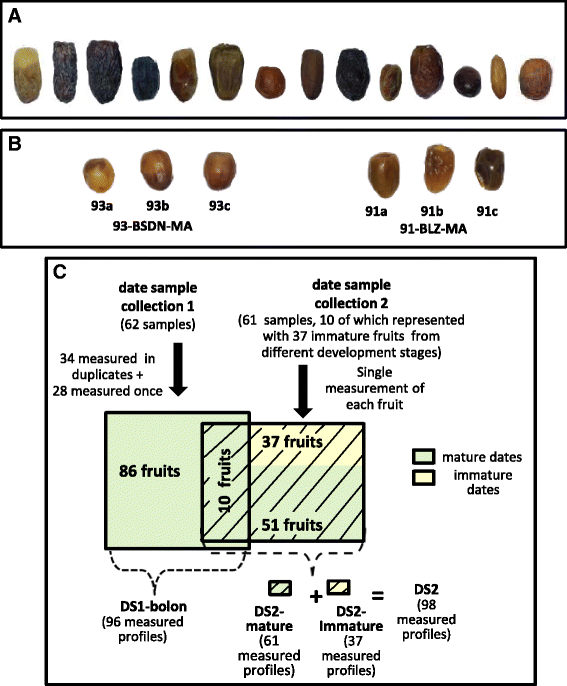
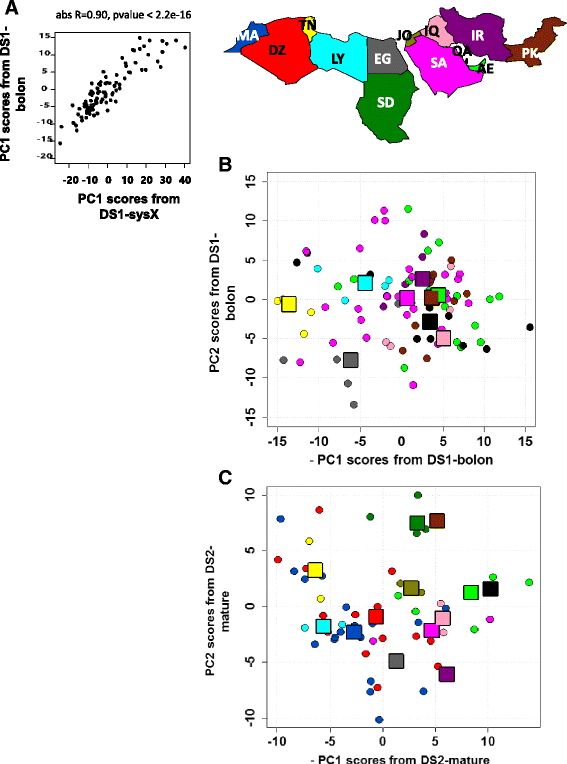
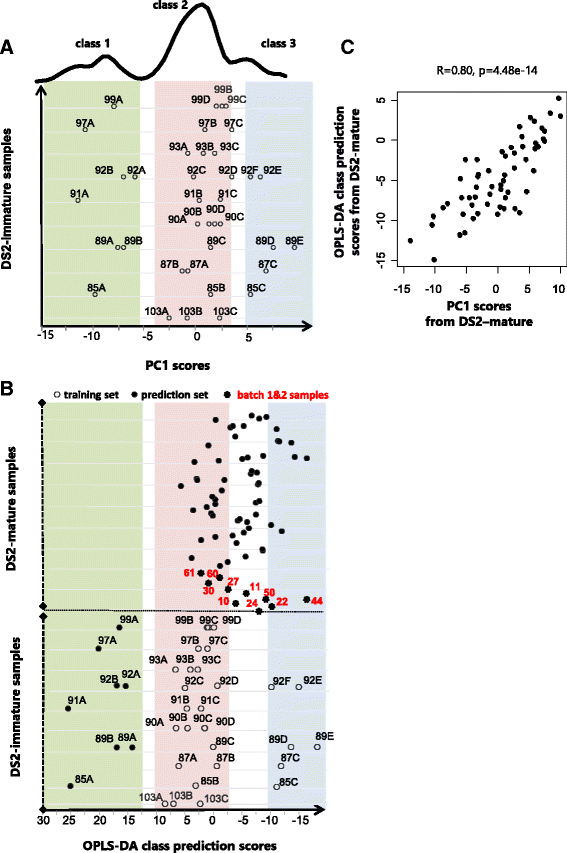
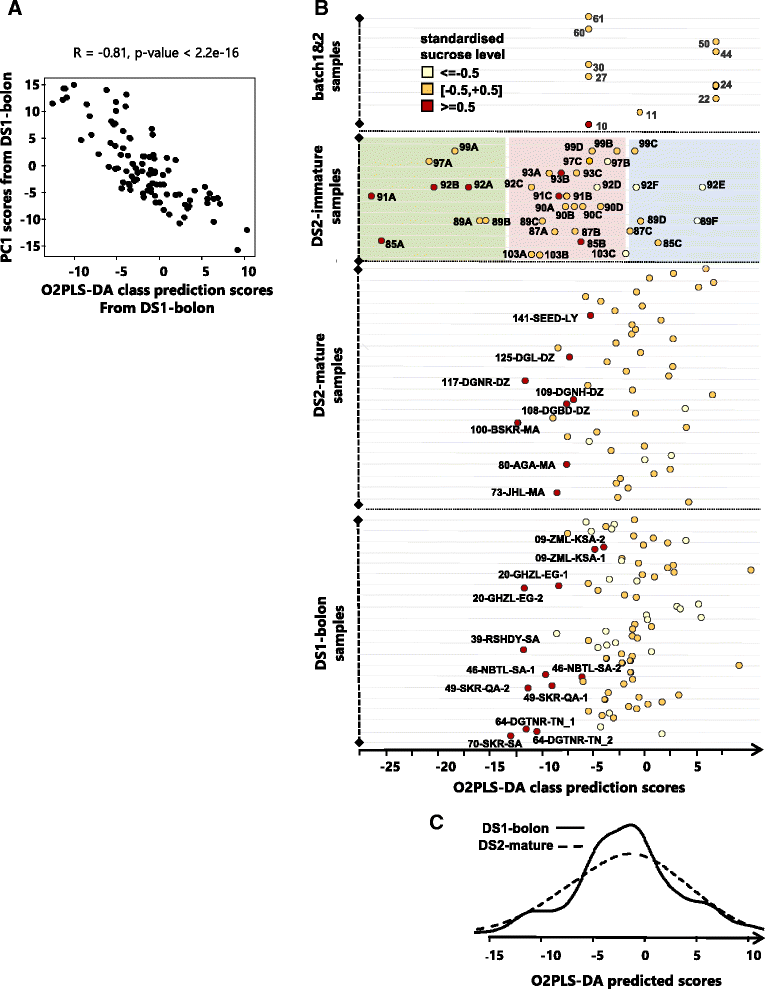
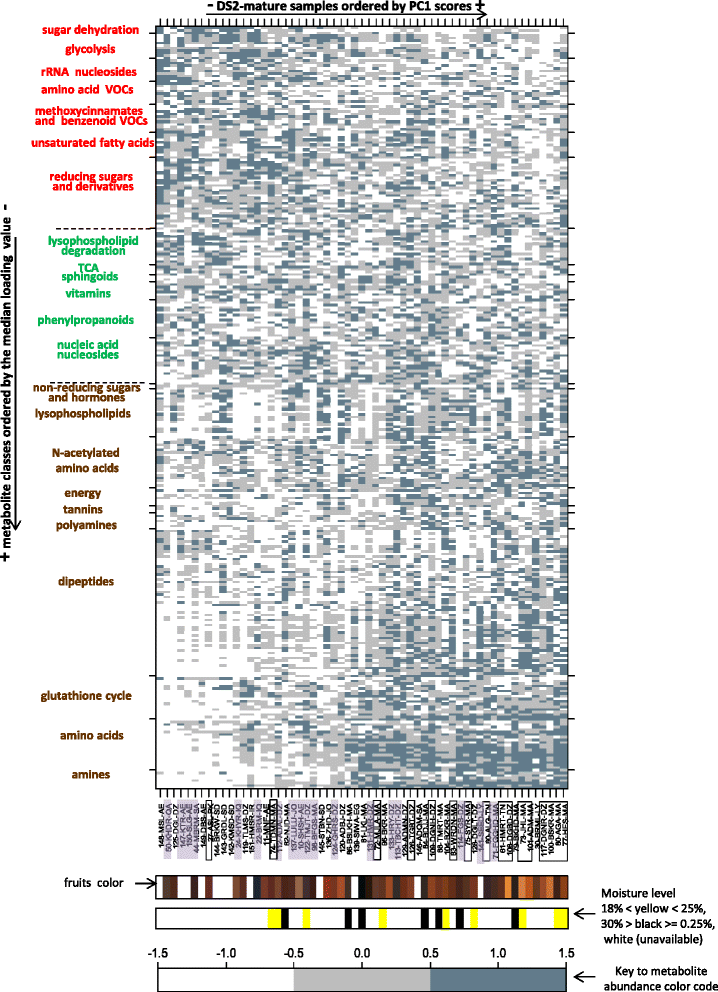
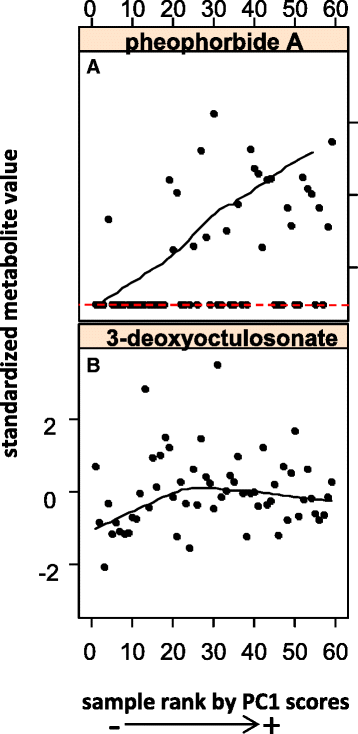
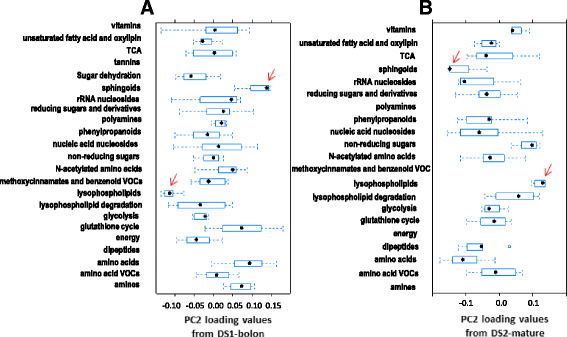
Similar articles
-
Metabolic profiling during peach fruit development and ripening reveals the metabolic networks that underpin each developmental stage.Plant Physiol. 2011 Dec;157(4):1696-710. doi: 10.1104/pp.111.186064. Epub 2011 Oct 20. Plant Physiol. 2011. PMID: 22021422 Free PMC article.
-
Influence of Different Drying Treatments and Extraction Solvents on the Metabolite Profile and Nitric Oxide Inhibitory Activity of Ajwa Dates.J Food Sci. 2015 Nov;80(11):H2603-11. doi: 10.1111/1750-3841.13084. Epub 2015 Oct 12. J Food Sci. 2015. PMID: 26457883
-
Metabolic profiling of Garcinia mangostana (mangosteen) based on ripening stages.J Biosci Bioeng. 2018 Feb;125(2):238-244. doi: 10.1016/j.jbiosc.2017.08.013. Epub 2017 Sep 29. J Biosci Bioeng. 2018. PMID: 28970109
-
Functional food and nutra-pharmaceutical perspectives of date (Phoenix dactylifera L.) fruit.J Food Biochem. 2020 Sep;44(9):e13332. doi: 10.1111/jfbc.13332. Epub 2020 Jun 26. J Food Biochem. 2020. PMID: 32588917 Review.
-
Date Palm Fruit (Phoenix dactylifera) and Its Promising Potential in Developing Functional Energy Bars: Review of Chemical, Nutritional, Functional, and Sensory Attributes.Nutrients. 2023 Apr 28;15(9):2134. doi: 10.3390/nu15092134. Nutrients. 2023. PMID: 37432292 Free PMC article. Review.
Cited by
-
Dates fruits effects on blood glucose among patients with diabetes mellitus: A review and meta-analysis.Pak J Med Sci. 2021 Jul-Aug;37(4):1230-1236. doi: 10.12669/pjms.37.4.4112. Pak J Med Sci. 2021. PMID: 34290813 Free PMC article. Review.
-
Patterns of Volatile Diversity Yield Insights Into the Genetics and Biochemistry of the Date Palm Fruit Volatilome.Front Plant Sci. 2022 Mar 14;13:853651. doi: 10.3389/fpls.2022.853651. eCollection 2022. Front Plant Sci. 2022. PMID: 35371149 Free PMC article.
-
Decontamination potential of date palm fruit via non-thermal plasma technique.Sci Rep. 2022 Oct 15;12(1):17323. doi: 10.1038/s41598-022-22335-5. Sci Rep. 2022. PMID: 36243776 Free PMC article.
-
Polyamines Regulate Strawberry Fruit Ripening by Abscisic Acid, Auxin, and Ethylene.Plant Physiol. 2018 May;177(1):339-351. doi: 10.1104/pp.18.00245. Epub 2018 Mar 9. Plant Physiol. 2018. PMID: 29523717 Free PMC article.
-
Unraveling dynamic metabolomes underlying different maturation stages of berries harvested from Panax ginseng.J Ginseng Res. 2020 May;44(3):413-423. doi: 10.1016/j.jgr.2019.02.002. Epub 2019 Feb 20. J Ginseng Res. 2020. PMID: 32372863 Free PMC article.
References
-
- Gasmi A. Le Palmier-Dattier: Elaourassia editions; 2012.
-
- Hasnaoui L, Elhoumaizi M, Hakkou A, Wathlet B, Sindic M. Physico-chemical characterization, Classification and Quality Evaluation of Date Palm Fruits of some Moroccan Cultivars. J Sci Res. 2011;3(1):11.
-
- Barreveld WH. Date palm products. In: Repository FCD, editor. Whole dates. Rome: Viale delle Terme di Caracalla; 1993.
-
- El Hadrami AA-K, Jameel M. Socioeconomic and traditional importance of date palm. Emirates J Food Agric. 2012;24(5):15.
Publication types
MeSH terms
Substances
LinkOut - more resources
Full Text Sources
Other Literature Sources
Research Materials
Miscellaneous

